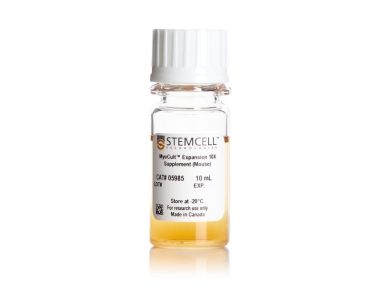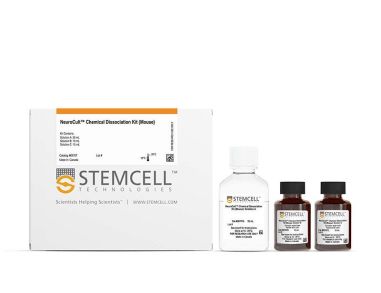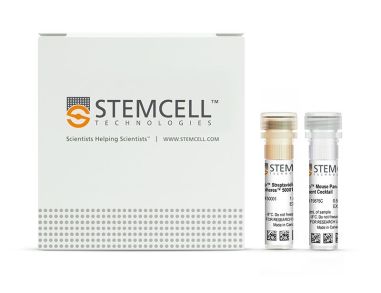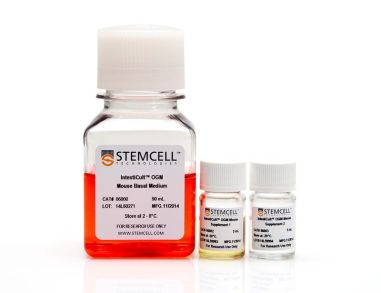搜索结果: 'methocult media formulations for mouse hematopoietic cells serum containing'
-
 MyoCult™ 扩增添加物 10X(小鼠) 小鼠骨骼肌祖细胞(卫星细胞)扩增的含血清补充物
MyoCult™ 扩增添加物 10X(小鼠) 小鼠骨骼肌祖细胞(卫星细胞)扩增的含血清补充物 -
 疾病状态人外周血制品,肠易激综合征 新鲜或冻存的人原代细胞
疾病状态人外周血制品,肠易激综合征 新鲜或冻存的人原代细胞 -
 EasySep™小鼠单核细胞分选试剂盒 免疫磁珠负选不带标记的小鼠单核细胞
EasySep™小鼠单核细胞分选试剂盒 免疫磁珠负选不带标记的小鼠单核细胞 -
 ImmunoCult™ 小鼠Treg分化添加剂 小鼠naïve CD4+ T细胞向调节性T细胞(Tregs)细胞分化的无血清培养补充
ImmunoCult™ 小鼠Treg分化添加剂 小鼠naïve CD4+ T细胞向调节性T细胞(Tregs)细胞分化的无血清培养补充 -
 NeuroCult™化学解离试剂盒(小鼠) 小鼠神经球化学解离试剂盒
NeuroCult™化学解离试剂盒(小鼠) 小鼠神经球化学解离试剂盒 -
 EasySep™小鼠Pan-ILC富集试剂盒
EasySep™小鼠Pan-ILC富集试剂盒对来源于小鼠肺、淋巴结或其他组织单细胞悬液中的未标记 ILC1、ILC2 和 ILC3 细胞进行免疫磁珠负选分离
-
 EasySep™小鼠定制富集试剂盒 免疫磁珠负选试剂盒
EasySep™小鼠定制富集试剂盒 免疫磁珠负选试剂盒 -
 EasySep™小鼠中性粒细胞富集试剂盒 免疫磁珠负选未标记的小鼠中性粒细胞
EasySep™小鼠中性粒细胞富集试剂盒 免疫磁珠负选未标记的小鼠中性粒细胞 -
 IntestiCult™ 类器官生长培养基 (小鼠) 用于建立和维持小鼠肠道类器官的培养基
IntestiCult™ 类器官生长培养基 (小鼠) 用于建立和维持小鼠肠道类器官的培养基 -
 重组小鼠SCF(大肠杆菌表达) 干细胞因子
重组小鼠SCF(大肠杆菌表达) 干细胞因子 -
 重组小鼠SDF-1 α (CXCL12) 基质细胞衍生因子1α
重组小鼠SDF-1 α (CXCL12) 基质细胞衍生因子1α -
 EasySep™小鼠NK细胞分选试剂盒 免疫磁珠负选不带标记的小鼠NK细胞
EasySep™小鼠NK细胞分选试剂盒 免疫磁珠负选不带标记的小鼠NK细胞


 EasySep™小鼠TIL(CD45)正选试剂盒
EasySep™小鼠TIL(CD45)正选试剂盒





 沪公网安备31010102008431号
沪公网安备31010102008431号